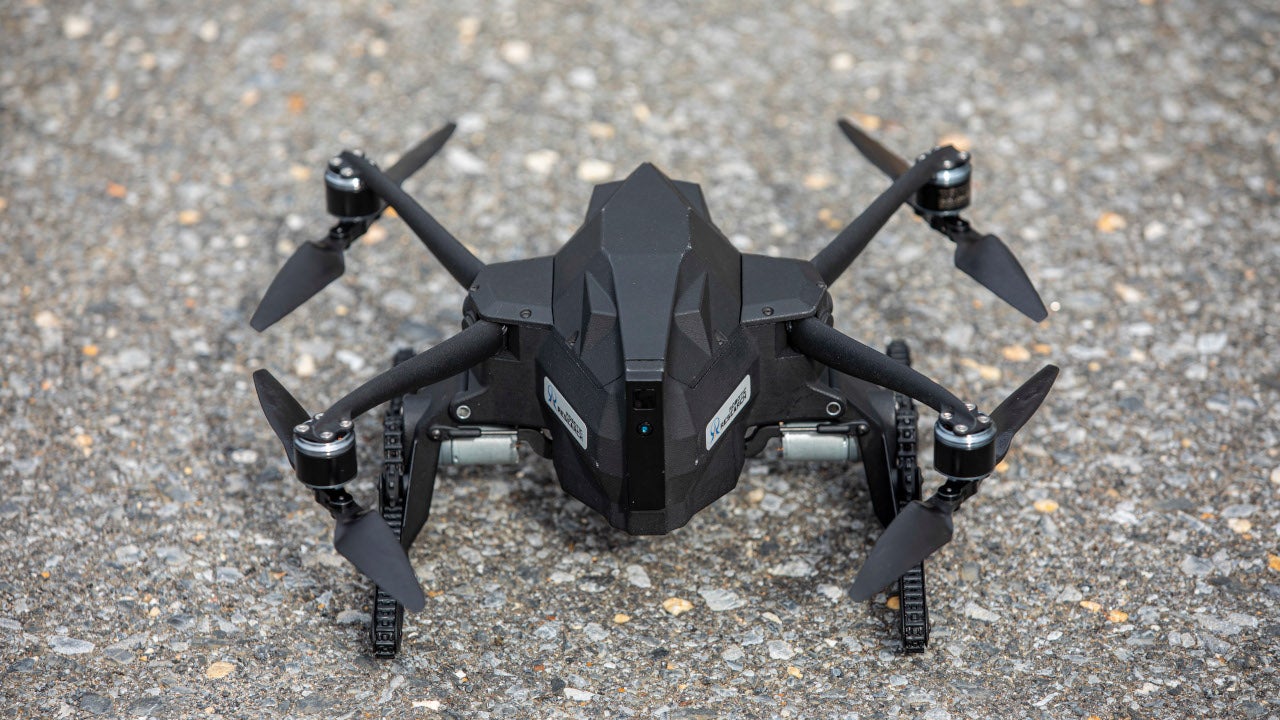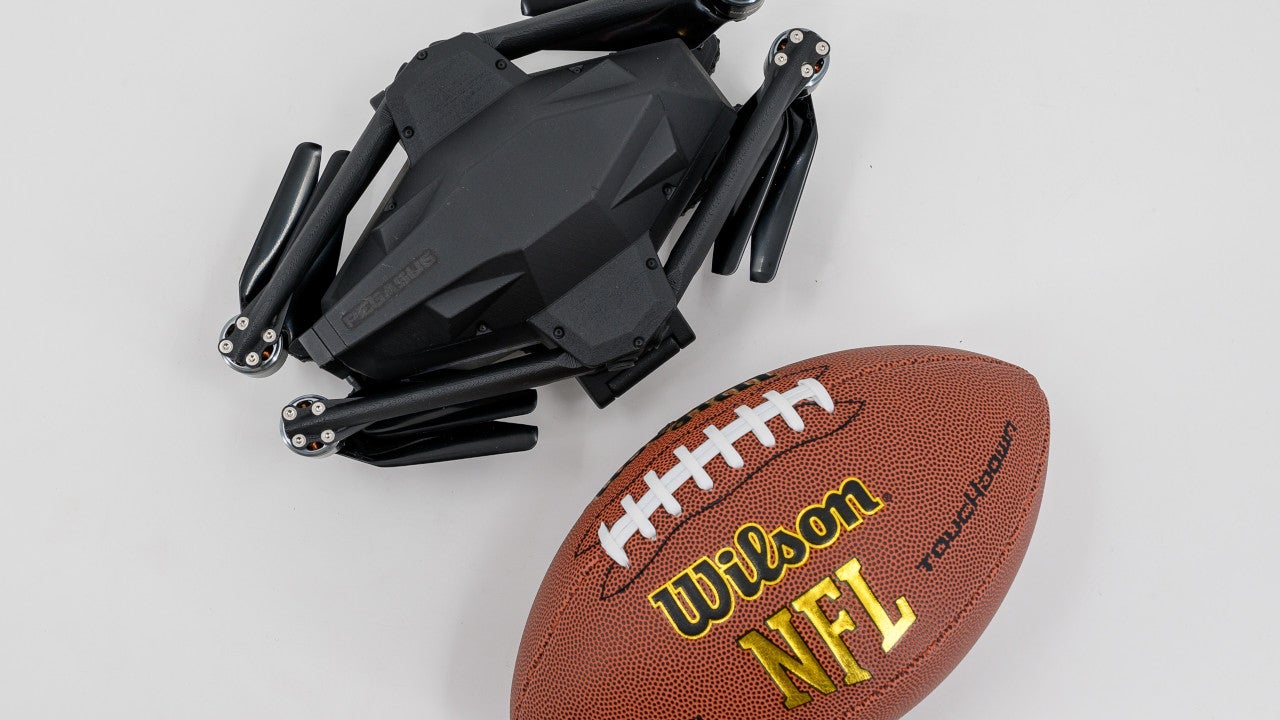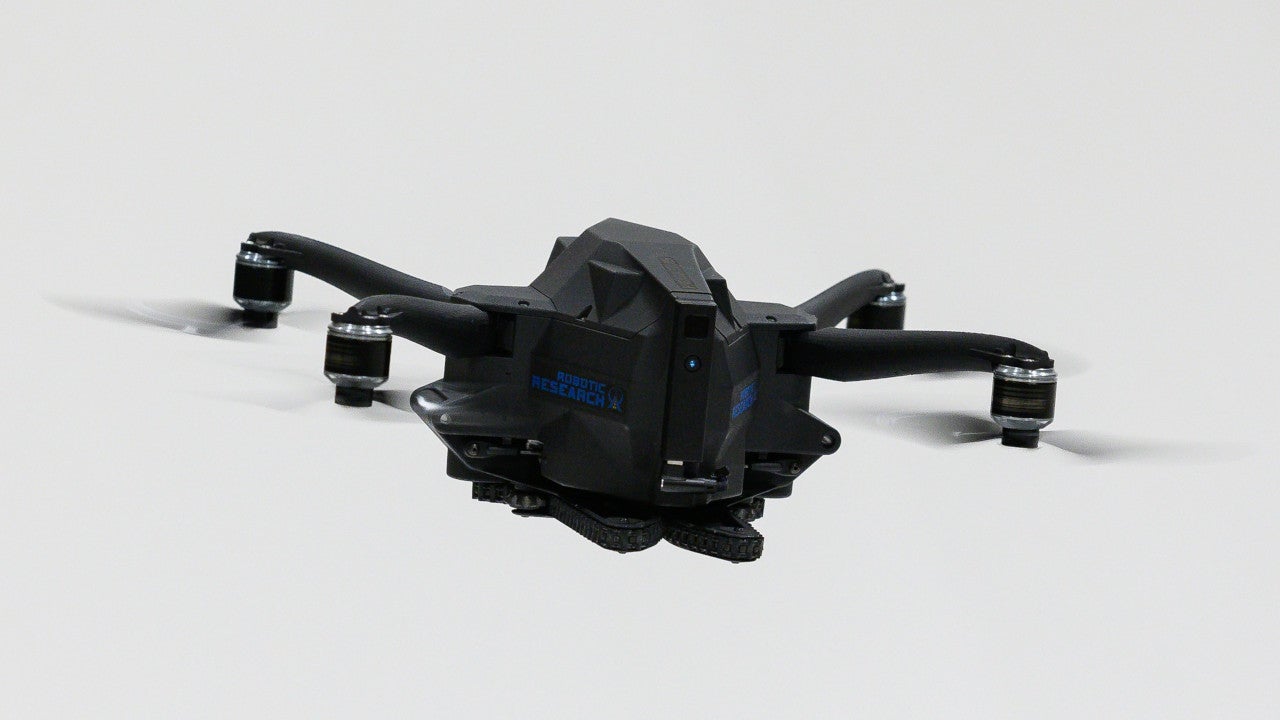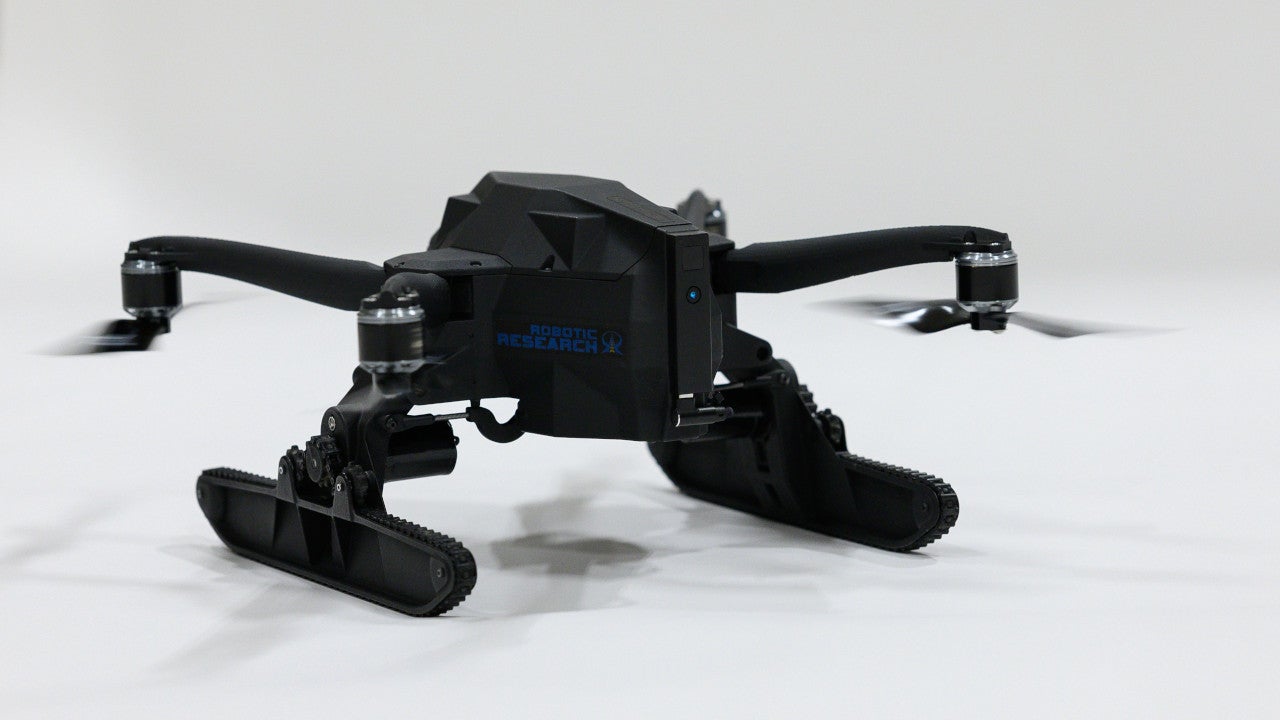Pegasus family of transformable unmanned aerial systems (UAS)/unmanned ground vehicles (UGV) is being offered by Robotic Research.
The tactically deployable, autonomous robotic system can operate as a vertical take-off and landing (VTOL) UAS and a tracked UGV. The Pegasus range is equipped with artificial intelligence (AI), which allows the vehicles to avoid obstacles and create full 3D mapping in any environment.
Robotic Research unveiled the Pegasus autonomous system at the AUVSI Unmanned Systems-Defense, Protection, Security conference held in Washington DC, in August 2019.
Pegasus Mini, a football-size transformable drone, was launched at the CES 2020 exhibition held in Las Vegas in January 2020.
Robotic Research conducted a test run of the Pegasus robotic system during the Project Convergence capstone event held at Yuma Proving Ground, Arizona, in September 2020. The Project Convergence aims to demonstrate the US Army’s multi-domain operations (MDO) warfighting concept.
Design and features of Pegasus family of systems
The Pegasus family encompasses three variants including mid-size Pegasus II, heavy-lift Pegasus III and small back-packable Pegasus Mini.
The transformable platforms feature quadcopter configuration and also integrate tracks that transform into propeller guards during the transition from ground to air mode.
The basic components of the unmanned system include multiple cameras and an encrypted datalink. The robot also has a unique GPS-denied functionality, allowing it to perform missions individually or as a part of a group including other Pegasus systems, manned and unmanned ground vehicles, as well as dismounted soldiers.
The transformable platform is controlled by a pocket universal controller kit (PUCK) which can simultaneously transmit autonomous missions to multiple Pegasus systems.
The PUCK controller is installed with the commercial off-the-shelf (COTS) components.
Pegasus II and III robots
Pegasus II is a mid-size autonomous system intended for intelligence, surveillance and reconnaissance (ISR), and chemical, biological, radiological and nuclear (CBRN) missions. Referred to as the Swiss Army Knife of the Pegasus family, the system has a weight of 6.8kg including the battery and can carry a maximum payload of 1.81kg.
The drone can perform operations in GPS-denied environments and can save data including video, 3D maps, and location information for post processing. The flight time of the Pegasus II aerial vehicle is 20 minutes, while its endurance in ground mode is up to four hours.
The Pegasus III system can carry heavy payloads, while maintaining the combined flying and driving capability. It weighs 17.23kg and can also carry larger 3D LIDARs. The system can easily drive through a standard doorway, while carrying a payload of up to 4.53kg. It can carry a maximum payload of 9.07kg.
Pegasus Mini
Pegasus Mini is the smallest member in the Pegasus family of autonomous systems. It has a length of 40.6cm, width of 20.3cm and weight of 1.9kg including the battery.
The system can reach confined spaces and can traverse areas that are unapproachable for many other UAVs and UGVs, enabling it to support commercial industry, first responders, law enforcement and military missions. It can be fitted with mapping sensors and can operate in GPS-denied environments. The robotic system mainly acts as a situational awareness tool and can also carry smaller payloads.
The maximum payload capacity of the Pegasus Mini is 900g, while the vehicle has a maximum endurance of up to 30 minutes in flight mode and up to two hours in drive mode.
Pegasus missions
The Pegasus family of autonomous systems are capable of performing various missions at areas that are inaccessible for other robots. It can fly through building’s upper windows, land inside, and move around the top floor for investigation.
Pegasus also supports advanced perch and stare manoeuvrers, where the robotic system can be repositioned in ground mode and also fly over walls for mapping the other side.







